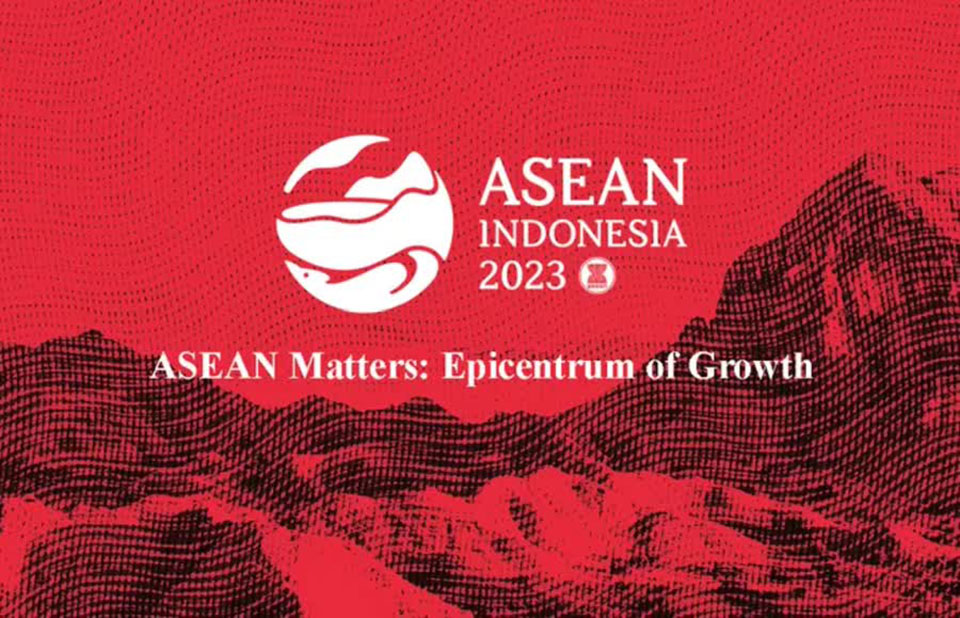
‘ASEAN as an Epicentrum of Growth’ is the theme of Indonesia’s 2023 ASEAN Chairmanship. Is it a reliable and attainable vision? Whilst some may be optimistic about the vision’s potential, for us, it sounds more like jargon than a vision.
Let’s begin by examining some of the key economic indicators that the optimistic side might have considered, which render the Association of Southeast Asian Nations (ASEAN) a potential epicentrum of growth.
First, ASEAN has recorded impressive economic performance and demographic profile over the last two decades. The region has recorded average economic growth of 5%, amongst the highest in the world from 2000-2022. As of 2022, ASEAN’s population stood at 672 million, about 9% of the world’s total population, and the region contributed 6.4% to global GDP.
Excluding data from Cambodia, ASEAN recorded labor productivity growth of 3.2% from 2000 to 2022. Notably, based on a simple average for the year 2022, about 68% of the population in the six largest economies in the ASEAN region—Indonesia, Malaysia, the Philippines, Thailand, Singapore, and Viet Nam— are within the working age range of 15 to 64 years old. Combined with a stable political situation, those factors place ASEAN as one of the most attractive trade and investment partners globally.
Second, ASEAN has posed promising trade and investment over the same period. As of 2022, ASEAN’s total trade accounted for 7.7% of the world’s total trade or 17.6% of East Asia’s total trade. In the same year, ASEAN’s total foreign direct investment (FDI) accounted for 26.7% of total FDI in East Asia and 11.6% of total FDI in the rest of the world.
Third, lately, ASEAN has shown impressive development in the digital era. World’s digital trade is estimated to reach US$10 trillion by 2030, of which US$1 trillion or 10% will be contributed by ASEAN. In 2020, about 80% of internet users in ASEAN engaged in online shopping (Ing and Markus, 2023). Beyond trade, digital innovation, including artificial intelligence (AI), has the potential to reshape and revolutionize various industries and sectors, ranging from healthcare and education to finance, energy, and transport, amongst others.
Despite possessing key growth driving factors to be an epicentrum of growth, ASEAN faces at least three key challenges.
The first challenge is the rising geopolitical tensions. The ongoing US–China trade tensions, which have now extended to technology and security, are unlikely to ease regardless of which political administration holds power in the US. The ongoing war in Ukraine since 2014 (and hopefully not in Taiwan any time soon) has complicated the global geopolitical landscape, which has placed ASEAN in the crosshairs of these tensions. The region is frequently pressured to choose a side amidst growing strategic competition.
Second, ASEAN centrality is increasingly tested as there has been a growing number of developed countries-led economic frameworks and/or economic cooperation initiatives. One of the recently launched initiatives is the US-led Indo-Pacific Economic Framework (IPEF), which has left ASEAN divided. IPEF is open (and with political consideration) only to relatively developed and upper-middle-income ASEAN countries, thus excluding Cambodia, Lao People’s Democratic Republic, and Myanmar.
Keep in mind that IPEF is not a trade agreement, and it does not offer preferential market access. Critics point out that IPEF is more symbolic for US domestic votes than an effective policy measure for its members. Such divisions within ASEAN may lead to greater economic and political disparities and potentially create a divergence in regional policies that will bring less-favorable consequences economically and politically.
Last, ASEAN faces inconsistencies in its domestic policies. In addition to dealing with international complications, ASEAN’s domestic policies are, to some extent, perceived as uncertain and inconsistent across provinces, institutions, and in relation to its international and regional commitments.
The inconsistencies are often reflected in policies that favor certain sectors through heavy support and subsidies as well as non-tariff barriers, local content requirements, and complicated and costly cross-border customs clearance. Such policies may lead to uneven economic development within the region and potentially hinder ASEAN’s ability to fully realize its potential as a unified economic bloc.
To ensure its success on the international front, ASEAN should prioritize maintaining its centrality and solidarity as a united entity instead of hastily joining numerous developed country–led trade agreements or economic frameworks. It is crucial for ASEAN to carefully consider what matters for the region by emphasizing the effectiveness of the agreements and cooperation mechanisms in promoting ASEAN’s development and improving the well-being of its people, rather than the number of free trade agreements, comprehensive economic partnership agreements, or trade frameworks of which ASEAN is (or a few ASEAN countries are) apart.
ASEAN must manage its openness in trade and investment and ensure consistency with its bilateral, regional, and multilateral commitments. It needs to emphasize that it is an active peace promoter and a rising middle power with a demographic dividend and promising growth supported by a stable macroeconomic environment and growing trade and investment.
This is the time for ASEAN to stand up for the best interests of its people and embrace policies that are most beneficial to them.
On the domestic front, ASEAN should step away from ‘vote buying’ or ‘populism policies’ such as fuel subsidies, subsidies to state-owned enterprises, or any form of subsidies only to particular industries. Instead, it should allocate the resources to investment in infrastructure, institution building, and education. The latest policies may be unpopular with current political leaders as a current investment will be enjoyed only by future leaders.
But remember, only true leaders can leave a legacy. In the end, the key to development in the age of AI and digital technology is ‘human capital’. If ASEAN fails to take the bitter pill of massive development of infrastructure, education, and digital connectivity, and prepare for the robot and AI era, ASEAN as an epicentrum of growth may just be wistful thinking, if not a myth. (NNT)





